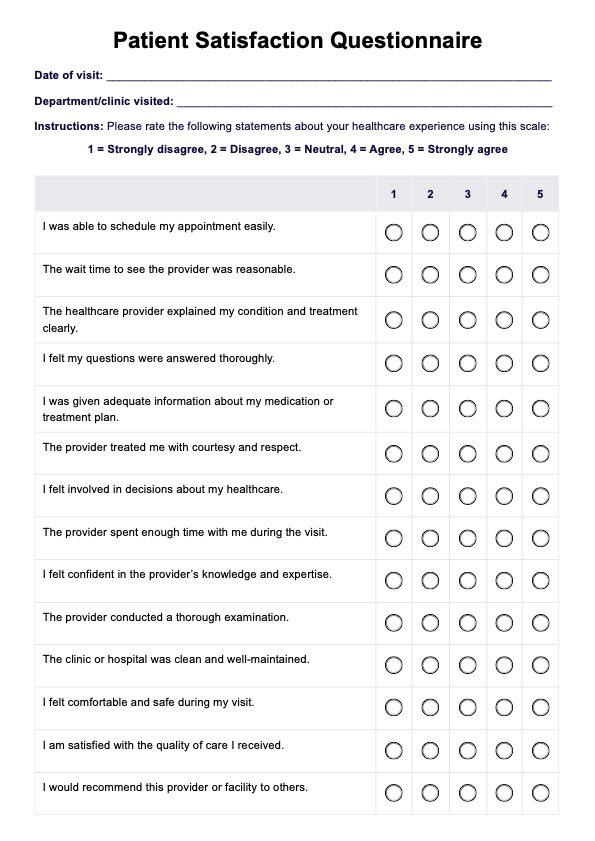The Patient Satisfaction Questionnaire serves as a valuable instrument to gather patient feedback about their experiences with care providers, the hospital environment, and the medical staff. By analyzing survey results, healthcare organizations can identify areas for improvement, such as reducing waiting room times or enhancing interactions where the provider explains treatment plans.

Patient Satisfaction Questionnaires
Streamline patient feedback with this customizable Patient Satisfaction Questionnaire template. Improve care quality, gather insights, and enhance patient experience.
Patient Satisfaction Questionnaires Template
Commonly asked questions
This template enables care providers to efficiently assess how patients rate their experiences across key aspects of hospital care, such as interactions with hospital staff and the overall hospital environment.
Once the survey results are compiled, practitioners should analyze them to identify patterns and actionable insights. For example, feedback might reveal concerns about medical staff communication or suggestions for improving the waiting room experience. By addressing these findings, healthcare teams can implement targeted strategies to improve quality.
EHR and practice management software
Get started for free
*No credit card required
Free
$0/usd
Unlimited clients
Telehealth
1GB of storage
Client portal text
Automated billing and online payments











